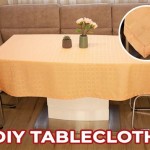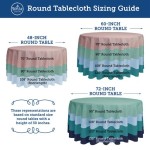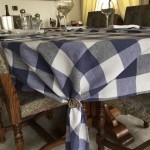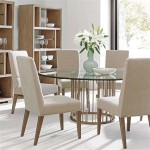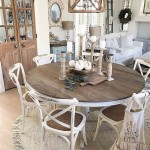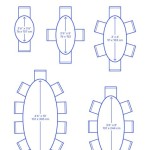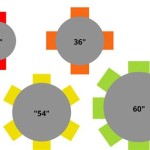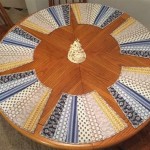How to Buy a Tablecloth for a Rectangular Table
Selecting a tablecloth for a rectangular table involves more than simply choosing a visually appealing fabric. Accurate measurements, consideration of fabric properties, and an understanding of intended use are all critical factors in ensuring the tablecloth not only fits appropriately but also serves its purpose effectively and enhances the aesthetic of the dining area or other space.
A well-chosen tablecloth offers protection to the underlying table surface from scratches, spills, and heat damage. It also provides an immediate upgrade to the overall ambiance, transforming a plain table into an inviting and stylish focal point. The selection process requires a systematic approach, starting with precise measurements and progressing through material evaluation to the final purchasing decision.
Measuring for the Perfect Fit
The first and most crucial step in selecting a tablecloth is accurately measuring the table. Improper measurements render even the most beautiful tablecloth useless. The length and width of the rectangular table must be determined with precision. Using a measuring tape, measure the length from one end of the table to the other and repeat for the width. It is best to use a flexible measuring tape to ensure accurate readings, especially if the table has rounded edges.
Once the table dimensions are established, the desired drop, the length of fabric that hangs over the edge of the table, must be considered. The drop is a matter of personal preference, style, and practicality. A standard drop typically ranges from 8 to 12 inches. For formal events or a more elegant look, a longer drop, reaching the floor, may be preferred. For everyday use, a shorter drop is often more practical, preventing accidental pulling or tripping.
To calculate the appropriate tablecloth size, the desired drop is doubled and added to both the length and the width of the table. For example, if the table measures 40 inches wide and 60 inches long, and a 10-inch drop is desired, the calculations would be:
Tablecloth width: 40 inches (table width) + 10 inches (drop) + 10 inches (drop) = 60 inches
Tablecloth length: 60 inches (table length) + 10 inches (drop) + 10 inches (drop) = 80 inches
Therefore, a 60-inch by 80-inch tablecloth would be required to achieve a 10-inch drop on a 40-inch by 60-inch table. It is always preferable to err on the side of slightly larger measurements, as a slightly oversized tablecloth is generally more manageable than one that is too small.
For events requiring a floor-length tablecloth, the drop will be approximately half the height of the table, assuming a standard table height of around 30 inches. In this case, the tablecloth dimensions would be calculated by adding the table height (approximately 30 inches) twice to both the length and width. This type of tablecloth is frequently used for formal banquets, wedding receptions, or buffet tables.
Fabric Considerations: Material Matters
The choice of fabric significantly impacts the tablecloth's appearance, durability, and ease of care. A wide range of materials is available, each possessing unique characteristics that make them suitable for different purposes.
Cotton is a popular choice due to its affordability, softness, and availability in a wide variety of colors and patterns. Cotton tablecloths are generally absorbent and easy to care for, although they are prone to wrinkling and may require ironing after washing. Pre-shrunk cotton options are available to minimize shrinkage during laundering. Cotton blends, such as cotton-polyester mixtures, offer enhanced wrinkle resistance and durability compared to pure cotton.
Linen is a luxurious natural fiber known for its elegant drape and sophisticated appearance. Linen tablecloths are highly absorbent, durable, and become softer with each washing. However, linen wrinkles very easily and requires meticulous ironing to maintain a crisp, smooth appearance. Linen is often considered a high-end choice for formal dining or special occasions.
Polyester is a synthetic fabric known for its durability, wrinkle resistance, and stain resistance. Polyester tablecloths are relatively inexpensive and easy to care for, making them a practical choice for everyday use or events where frequent laundering is required. Polyester is less absorbent than natural fibers and may not feel as soft to the touch as cotton or linen.
Vinyl is a waterproof and stain-resistant material that is ideal for outdoor use or situations where spills are likely to occur. Vinyl tablecloths are easy to wipe clean and require minimal maintenance. However, vinyl is not breathable and may not be as aesthetically pleasing as other fabric options. It is also less durable than other materials and may be prone to tearing or cracking over time.
Damask is a woven fabric with a distinctive pattern that is created by the weaving process itself. Damask tablecloths are typically made from cotton, linen, or silk and offer a sophisticated and elegant look. Damask fabrics are relatively durable but may require special care when laundering.
Brocade is another woven fabric with an intricate raised pattern. Brocade tablecloths are often made from silk or rayon and are considered a luxurious choice for formal occasions. Brocade fabrics are delicate and require professional cleaning to prevent damage.
The optimal fabric choice depends on the intended use of the tablecloth, the desired aesthetic, and the level of maintenance required. For everyday use, a durable and easy-care fabric such as polyester or a cotton-polyester blend is often the best option. For formal occasions, linen or damask may be preferred for their elegant appearance. For outdoor use, vinyl provides the best protection against spills and the elements.
Style and Design: Complementing the Décor
Once the appropriate size and fabric have been determined, the style and design of the tablecloth should be considered. The tablecloth should complement the existing décor of the room and enhance the overall aesthetic. Factors to consider include color, pattern, texture, and embellishments.
Color plays a significant role in setting the mood and creating a desired atmosphere. Neutral colors such as white, beige, and gray are versatile and can be easily paired with other colors and patterns. Bright colors such as red, yellow, and blue can add vibrancy and energy to a space. Dark colors such as navy, black, and burgundy can create a sense of formality and elegance.
Patterns can add visual interest and personality to a tablecloth. Common patterns include stripes, floral prints, geometric designs, and abstract motifs. The scale of the pattern should be appropriate for the size of the table and the overall style of the room. A small, intricate pattern may be suitable for a smaller table, while a larger, bolder pattern may be more appropriate for a larger table.
Texture can add depth and dimension to a tablecloth. Textured fabrics such as damask, brocade, and quilted materials can create a luxurious and tactile experience. Smooth fabrics such as linen and satin offer a more refined and elegant look.
Embellishments such as embroidery, lace, and fringe can add a decorative touch to a tablecloth. These embellishments can enhance the overall style and create a more personalized look. However, it is important to choose embellishments that are durable and easy to care for.
When selecting a tablecloth, it is important to consider the existing décor of the room, including the color of the walls, the style of the furniture, and the overall ambiance. The tablecloth should complement these elements and create a cohesive and harmonious look. For example, a simple white linen tablecloth may be suitable for a minimalist dining room, while a patterned cotton tablecloth may be more appropriate for a casual kitchen.
In addition to the tablecloth itself, other table linens such as placemats, napkins, and table runners can be used to enhance the overall presentation. These linens can be coordinated with the tablecloth to create a cohesive and stylish look. Placemats and napkins can be used to protect the tablecloth from spills and stains, while table runners can add visual interest and define the center of the table.
Ultimately, the choice of style and design is a matter of personal preference. The most important consideration is to select a tablecloth that reflects your own taste and enhances the overall aesthetic of your dining area or other space. By considering these factors, you can choose a tablecloth that not only fits your table perfectly but also adds beauty and style to your home.
The considerations outlined above provide a comprehensive guide to selecting a tablecloth for a rectangular table. Careful attention to measurement, fabric quality, and design elements will ensure a purchase that meets both functional and aesthetic requirements.

What Size Tablecloth Do I Need Deconovo Us

Tablecloth Size Calculator Williams Sonoma Taste

3 Easy Ways To Measure Tablecloth Sizes Your Table Linens Size Guide

Whole Rectangular Tablecloths For Event Linens Cv

Balsacircle 60 X 102 White Rectangle Polyester Tablecloths Table Cover Linens Com

White Tablecloths Available In 19 Sizes Next Day Delivery

Rectangular Table Cloth Cotton And Linen Retro Style Solid Color My Easy Decor

Hblife Burlap Rectangle Tablecloth With Tassel Cotton Linen Rustic Tablecloths For Tables Farmhouse Table Cloths Kitchen Dinning Party 55 X86 6 8 Seats Coffee Com

Rectangle Tablecloths Tablecloth Com

Spring Fl Tablecloth Rectangular L130 X W160cm
Related Posts

